Motorcycle Investor mag
Subscribe to our free email news
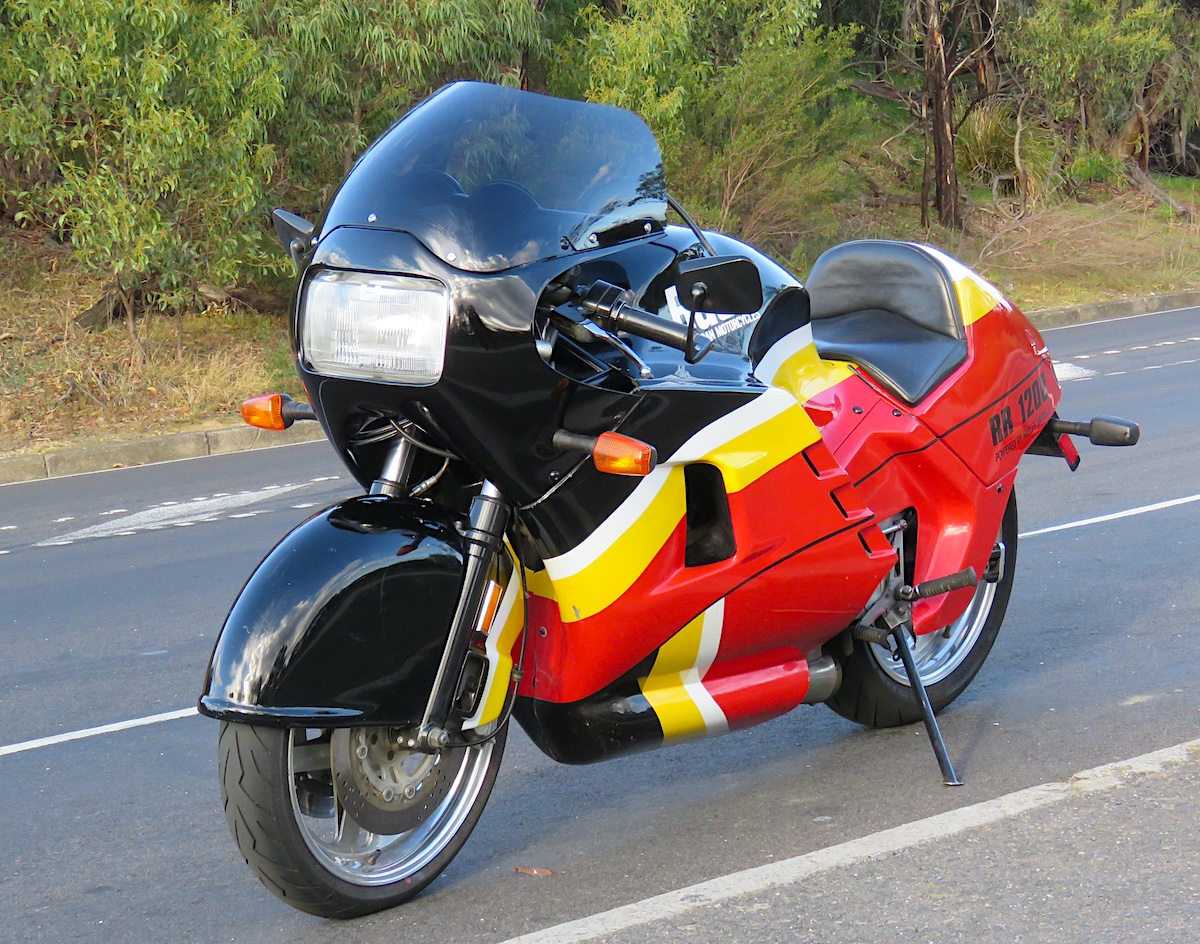
Barn Built Buell
Brought
here in 1990, this 1989 Buell RR 1200 Battletwin
is an ultra-rare find in Australia
(June 2024, Guy 'Guido' Allen)
See the ride video for this bike on YouTube
For
owner Alec Simpson, taking on the Buell RR 1200
Battletwin scratched some kind of itch. “I’ve always had
a soft spot for a couple of bikes in the universe:
Bimota DB1 and I quite like the look of the Ducati Paso
750. The K1 BMW was an interesting thing as well. I
thought the Buell when it came out was really
interesting-looking.
“In the
mid-to-late 1980s, that all-enclosing bodywork was a
theme. With the Buell, you never saw them and I’d never
ridden one.”
The RR
had been in long-term ownership with Damien K, who
suggested he swap Alec for a Ducati TT2 replica sitting
in the latter’s shed. The deal was done and the fun
began.
Over
the years, the RR had undergone some transformation,
including as a café racer -style bike with minimalist
bodywork.
Alec
decided he wanted to bring it back to original shape, as
a rebuild rather than a full restoration. That meant
much of the bodywork was cleaned up rather than
repainted, leaving the odd paint chip in place. The nose
cone is the one exception, which had to be repaired and
repainted, while a new windshield was made by Screens
for Bikes in Coburg.
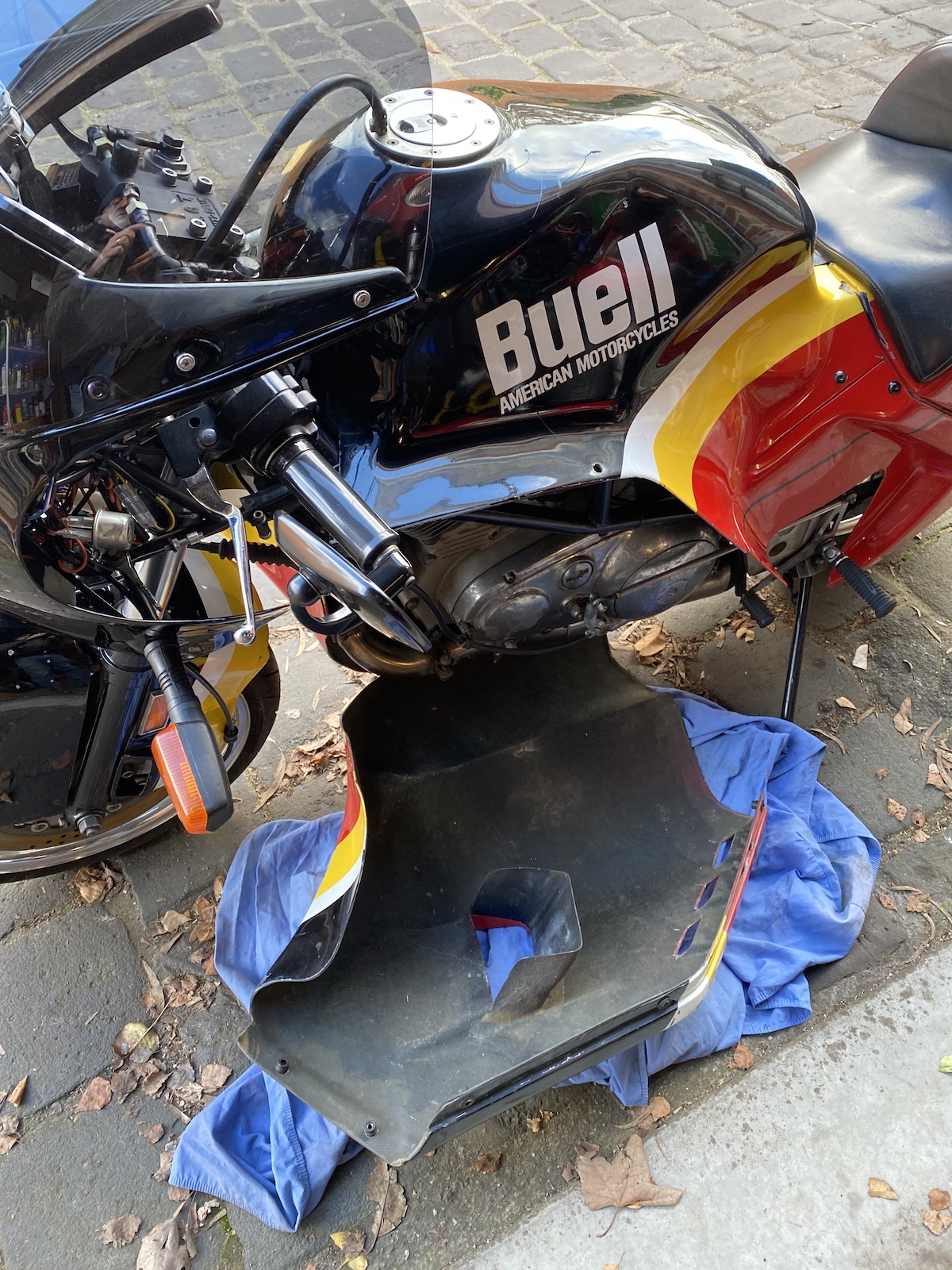
Overall,
the job turned out to be bigger than Alec anticipated
thanks to two factors: the rarity and hand-built nature
of the bike, plus the often unusual architecture. Alec
provides a a startling example, which is the main lower
fairing, that opens as a clamshell. Then there is the
fuel tank which he points out “is not attached the frame
at any point. It’s attached to the sidepanels, which are
attached to the nose cone and seat, which in turn are
attached to the frame.”
In
addition, age and wear had of course got to much of the
componentry which meant they were up for major work.
Spares
are an issue – there are none. You can get some of the
Harley engine parts, but even that is difficult as the
drivetrain is obsolete. “I tried to get an ignition
control unit for it, and couldn’t,” explains Alec. “The
later model units required a harness adapter that wasn’t
available either.”
The
wheels are Performance Machine, as are the four-spot
front brakes, but again they’re obsolete stock though
Brembo pads are said to fit. The rear brake is meant to
be a Gambler which got lost somewhere along the way and
is no longer available. It now runs a Suzuki RF900 part.
“A
young guy in Traralgon, called Ryan Phelps aka The Desmo
Doctor, did most of the work,” says Alec. His father was
Ken Phelps, who was well-known in Vincent circles.
“Ryan
is a great mechanic, he not only knows how to fix
things, he can make them. For example he machined up the
front disc buttons for the carriers. Without him, that
bike would still be a project. He rebuilt the engine,
suspension and everything else.” Meanwhile Nigel King at
Fusion Worx in Kensington fixed the existing fairing
brackets and made up the missing ones.
The
motor is a first-generation Evolution 1200, with
four-speed transmission. Harley also provided the
switchgear, instruments and handgrips. Just as an aside,
the headlight is from an FZ750 Yamaha, the tail-lamp is
Moto Guzzi SPIII and the indicators are FJ1100.
Just 59
of this model were made – some sources say 65. Several
were raced and their fate is largely unknown. Exactly
how many survivors are out there is a mystery, but it
seems most of them are literally museum pieces that no
longer get to see the road. Alec’s bike is likely to be
the only example remaining in Australia. There was a
second private import, but he believes that’s been
exported again.
He sees
the funny side of its often unusual structure. “The way
they put them together, I think they were on LSD,” he
jokes, “The frame is a chrome-moly structure similar to
a Ducati. However one of the tubes runs across the
clutch cover. If you want to remove the cover to change
the cable, you have to drop the motor!”
What’s
it like to ride? Different, very different! Weirdly, I
got to ride the bike when it was new and now the
freshly-rebuilt version 34 years down the track. It's
aged better than me...
The early Evo motor shakes rattles and rolls and leaves
you in no doubt it’s alive. Meanwhile the ride position
combines high footpegs (there’s no way you’ll touch them
down, unless you’ve fallen off) with a very long reach
to the handlebars. And it has a severely limited
steering lock – something likely to catch out the
unwary.
Nevertheless
the
bike steers really nicely once it’s rolling, even if the
suspension is on the stiff side for the road.
The
nature of the engine is such that there’s no point in
revving it past 5000 (redline is 6000). Instead you get
it into that fat midrange and just shift it up a gear
when you want to go faster. Alec estimates the top speed
at 200km/h.
There’s
no question it takes a while to get your head around how
it works – it highlights how much motorcycles have
changed over the past few decades. However once you get
into the groove it’s a whole lot of fun. Really, if you
don’t get off with an ear-to-ear grin, you’ve done
something wrong.
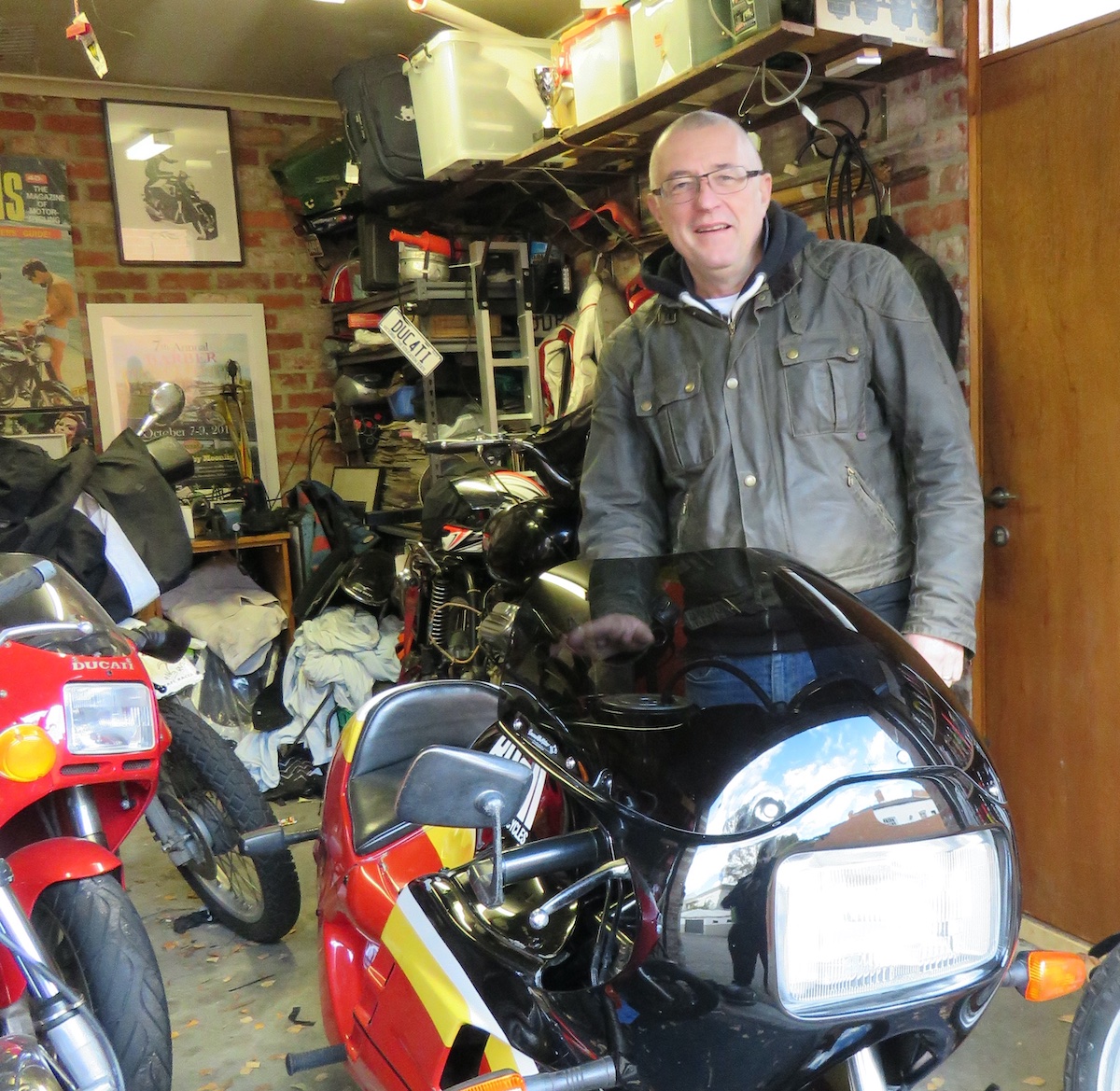
Getting
the Buell up and running was a long and involved process
that had more than its fair share of frustrations over a
couple of years. “There were times when I doubted my own
sanity,” Alec admits, “But I’m happy and pleased that
I’ve done it.” Amen to that…
***
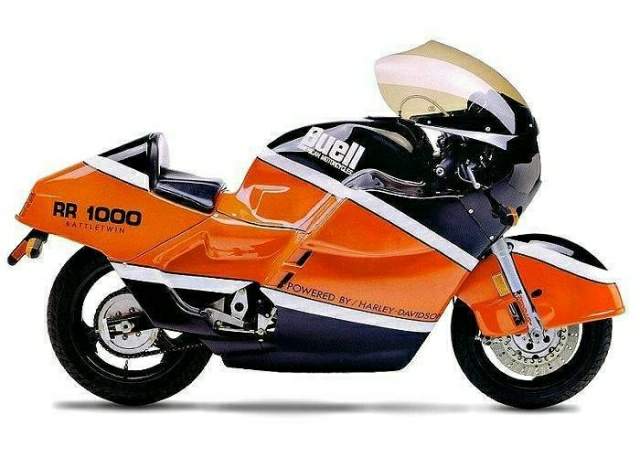
The
Early Version
Buell’s
predecessor to the 1200 was the RR 1000 (above), of
which 50 were made. They were powered by left-over
XR-1000 engines which Erik Buell managed to wrangle away
from the Motor Company.
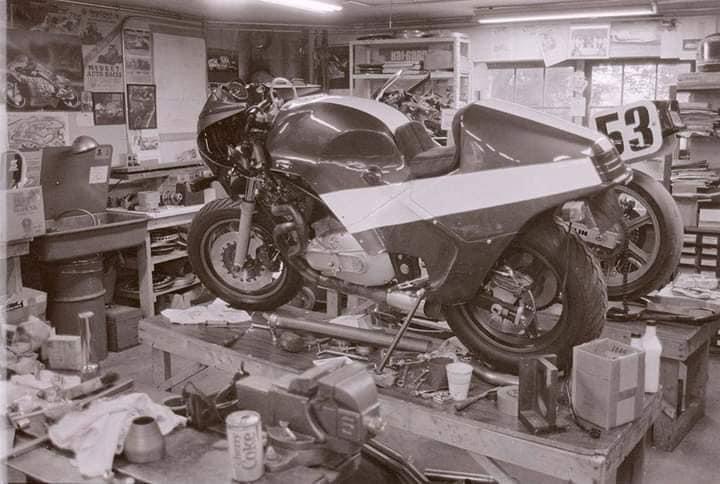
Early
bikes such as the RR 1000 and RR 1200 are colloquially
known as Barn Built Buells, after the relatively basic
conditions in which they were built.
***
SPECS
Buell
RR 1200 Battletwin 1989
ENGINE:
TYPE:
air-cooled, pushrod two valves per cylinder, 45-degree
V-twin (H-D 1200 gen 1 Evolution Sportster)
CAPACITY:
1198cc
BORE
& STROKE: 88.9 x 98.8mm
COMPRESSION
RATIO:
9.0:1
FUEL
SYSTEM: 40mm Keihin carburetor
TRANSMISSION:
TYPE:
four-speed, constant-mesh,
FINAL
DRIVE: chain
CHASSIS
& RUNNING GEAR:
FRAME
TYPE: Steel trellis
FRONT
SUSPENSION: telescopic fork with anti-dive
REAR
SUSPENSION: Single shock
FRONT
BRAKE: Performance Machine 4-spot discs
REAR
BRAKE: Single disc (originally Gambler)
DIMENSIONS
&
CAPACITIES:
WET
WEIGHT: 200kg
SEAT
HEIGHT: NA
WHEELBASE:
1300mm
FUEL
CAPACITY: 21lt
PERFORMANCE:
POWER: 60hp (45kW) @ 5000rpm
TORQUE: NA
PRICE
WHEN NEW (1989):
Au$27,995 (US$18,000, GB£15,000)
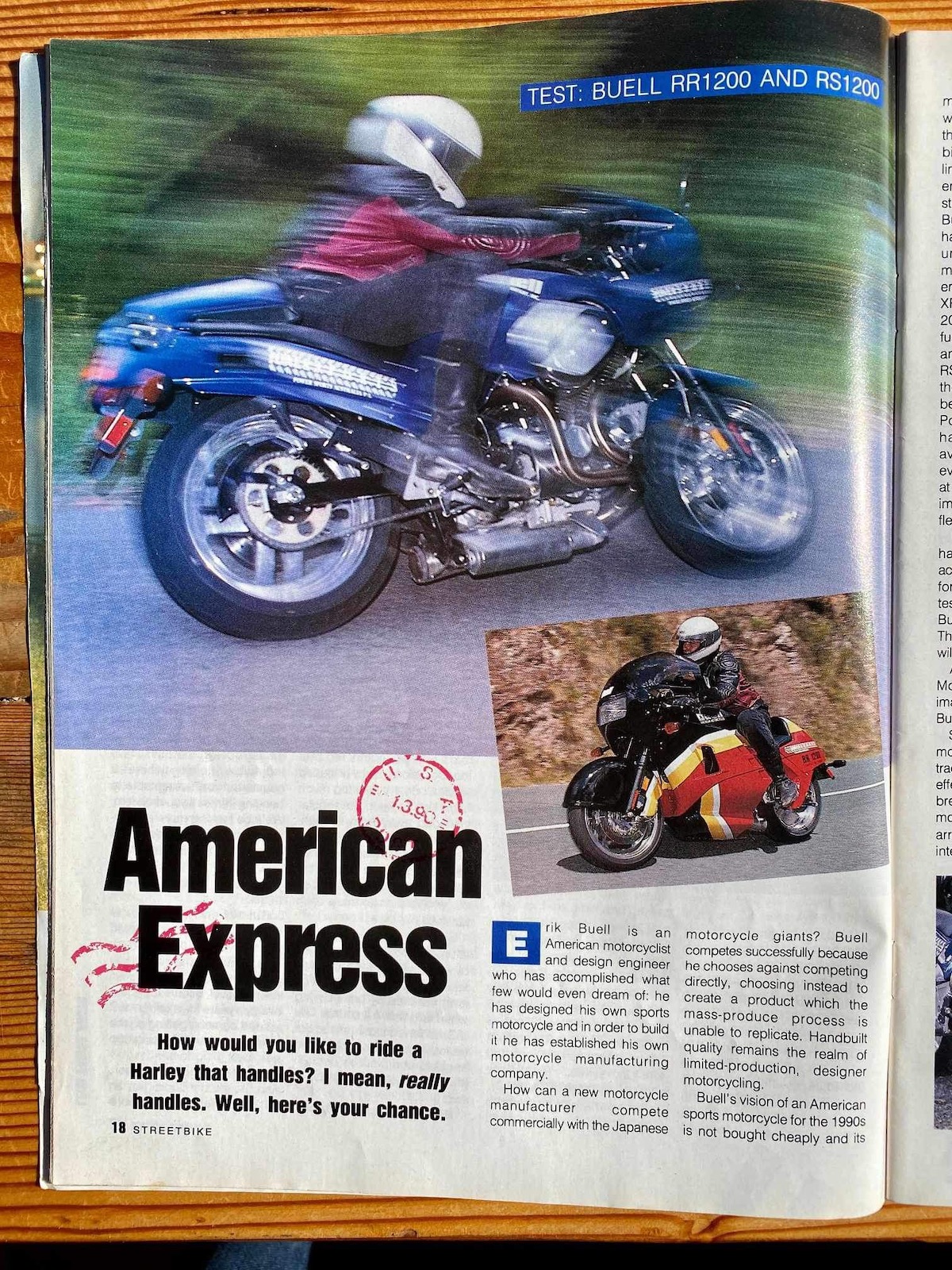
The RR 1200 and the RS 1200 stablemate appeared in Streetbike
magazine circa 1990. They were brought in by
then-importer Mike Sinclair. (Photography by Loose
Bruce)
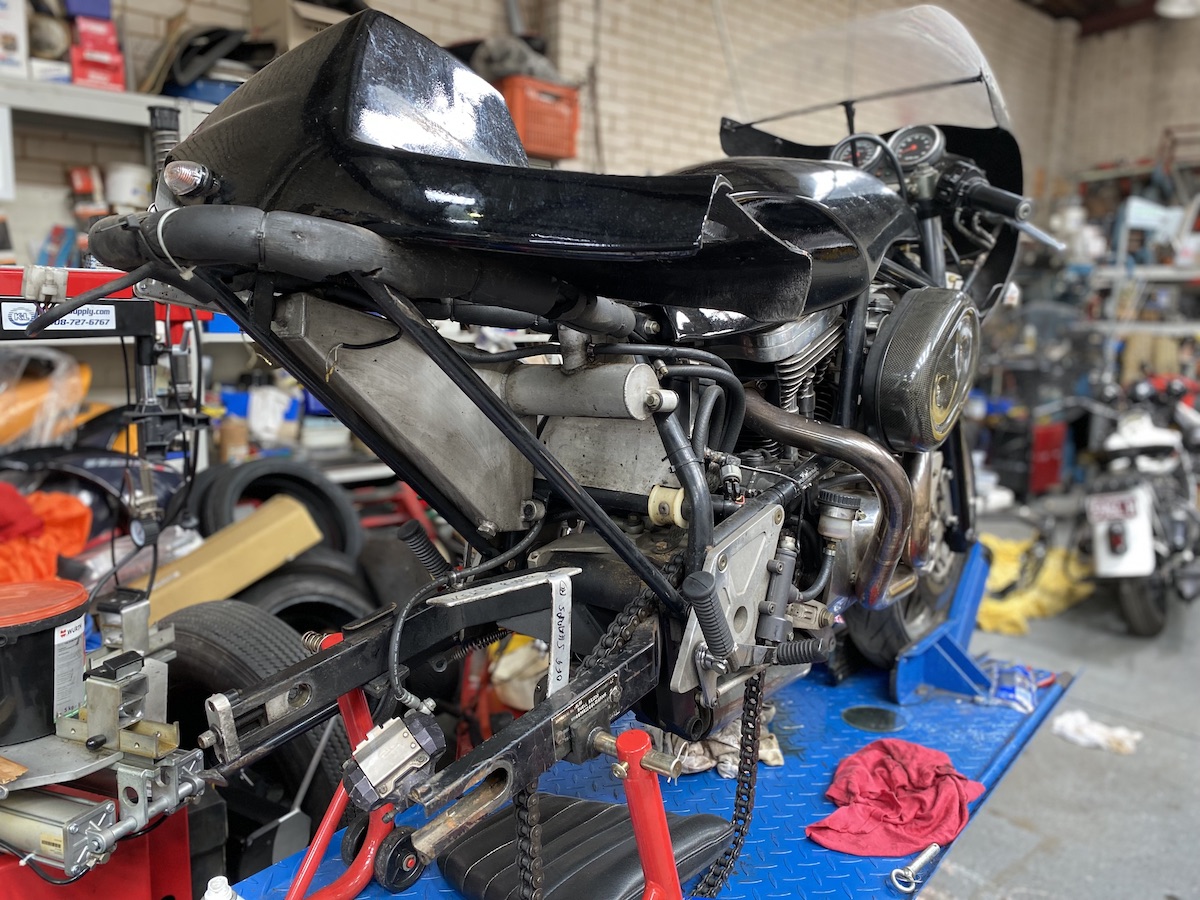
Early project shot – there's a long way to go...
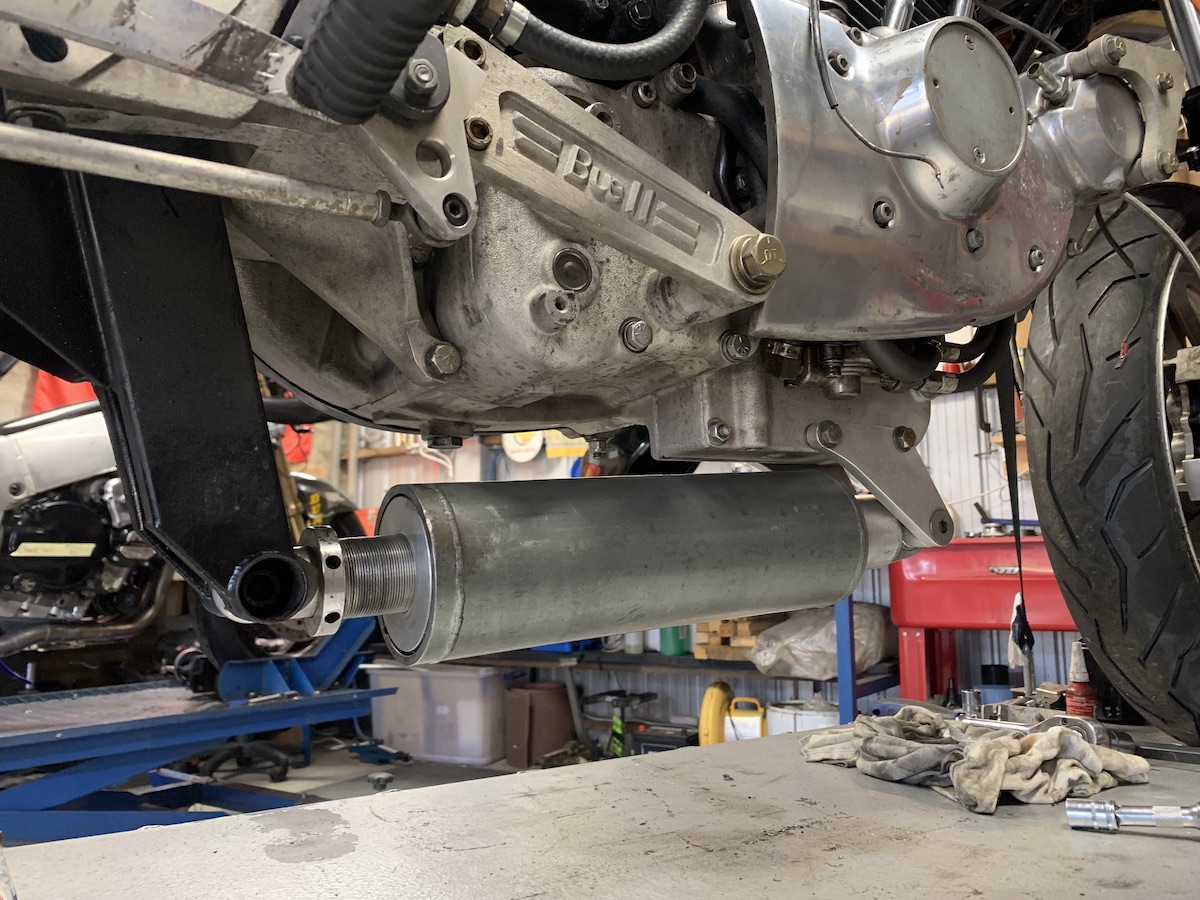
There are all sorts of interesting things going on underneath a barn built Buell...
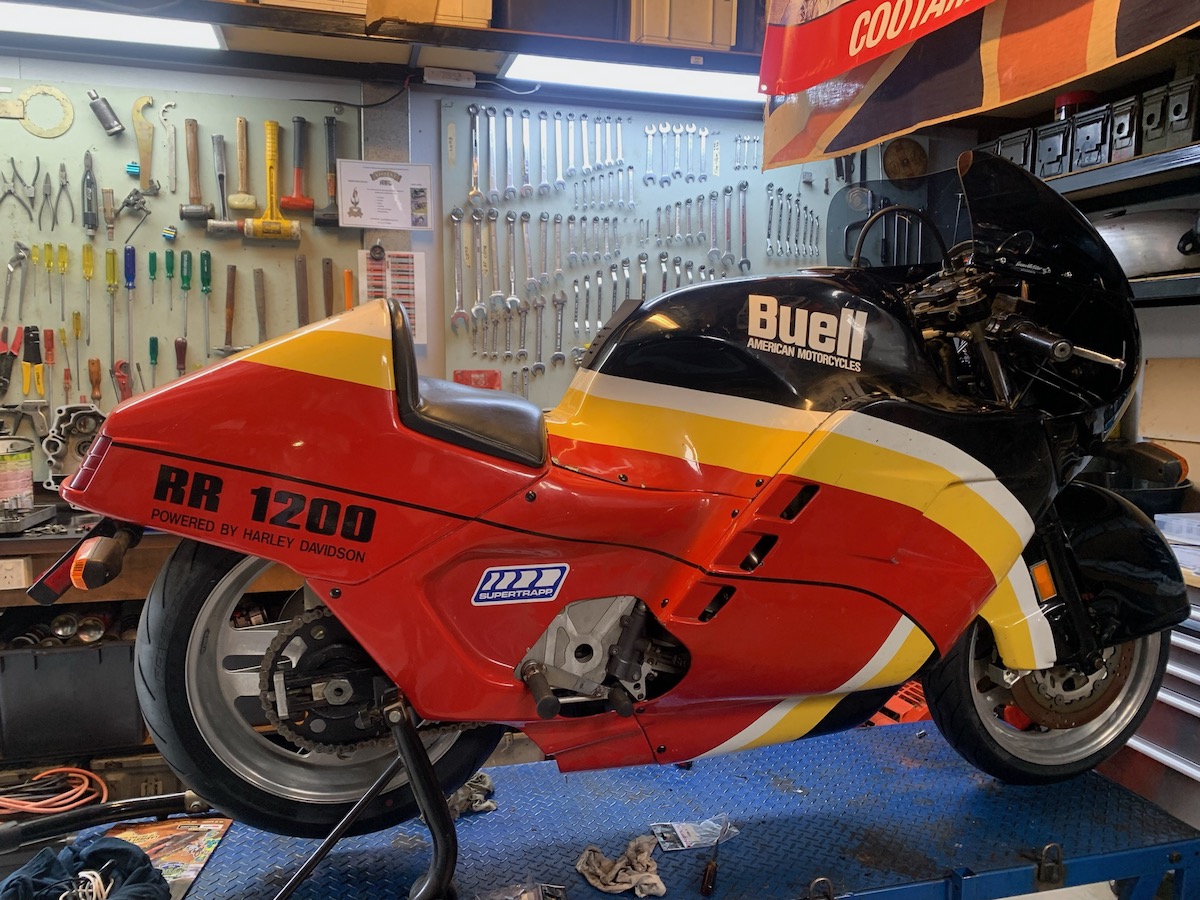
On the bench, nearly complete, and looking magnificent.
-------------------------------------------------
Produced by AllMoto abn 61 400 694 722
Privacy: we do not collect cookies or any other data.
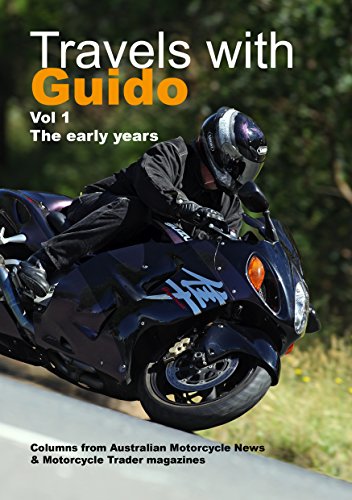
Archives
Contact




